No winter in Moscow;
massive wildfires in Siberia
https://www.gizmodo.com.au/2020/03/moscow-didnt-get-a-winter-this-year/
https://siberiantimes.com/ecology/others/news/wildfires-critical-in-siberia-and-russian-far-east-up-to-ten-times-worse-than-last-year/?fbclid=IwAR2oN9wchBH7_V6yU4kMPYuIOHrRbo_IFULrItzfl1oU8u31-bLoYj1qLLk
Wildfires ‘critical’ in Siberia and Russian Far East, up to ten times worse than last year
People are flouting coronavirus lockdown and start fires, warn officials.
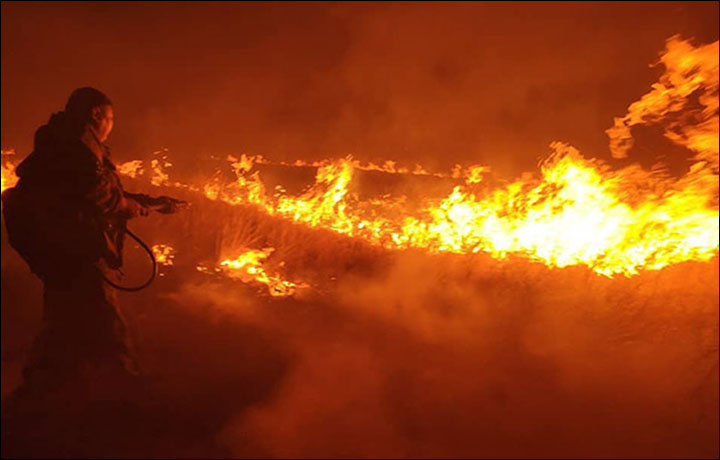
In Krasnoyarsk region ten times as much territory was ablaze compared to the same time last year, in Trans-Baikal region three times as much land is hit amounting to 200,000 hectares, in the Amur Region the number of outbreaks increased by one and a half times. Pictures from the Republic of Tuva by Tuva Ministry of Emergencies
Disturbing pictures and video shows the scale of wildfires engulfing Siberia and the Russian Far East after the winter snow melt.
With the government’s focus on coronavirus, President Vladimir Putin called for
vigilance over the annual challenge from forest and steppe fires worsening due to
climate warming.
Emergencies Minister Evgeny Zinichev warned in a video conference with the
president that a combination of factors now poses a threat to many regions of
Russia.
‘A critical situation with fires has developed in Siberia and the Far East,’ he warned.
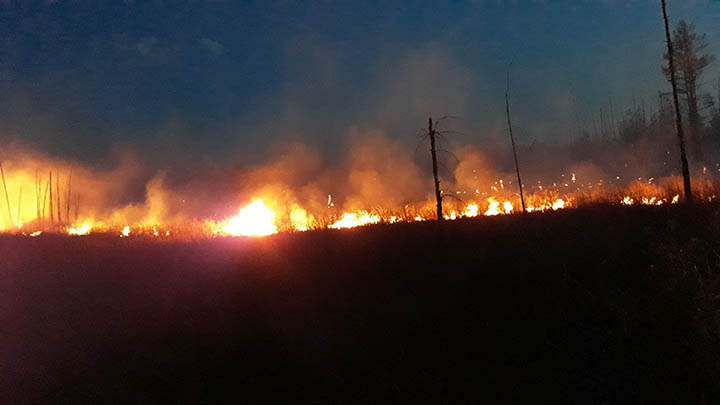

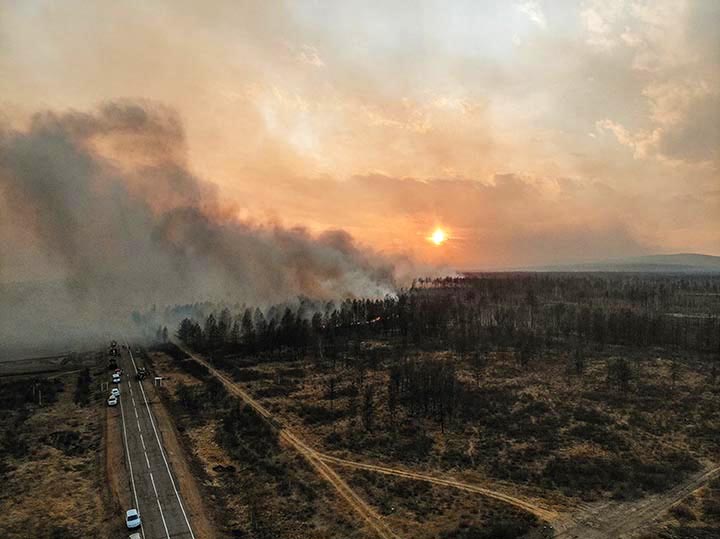
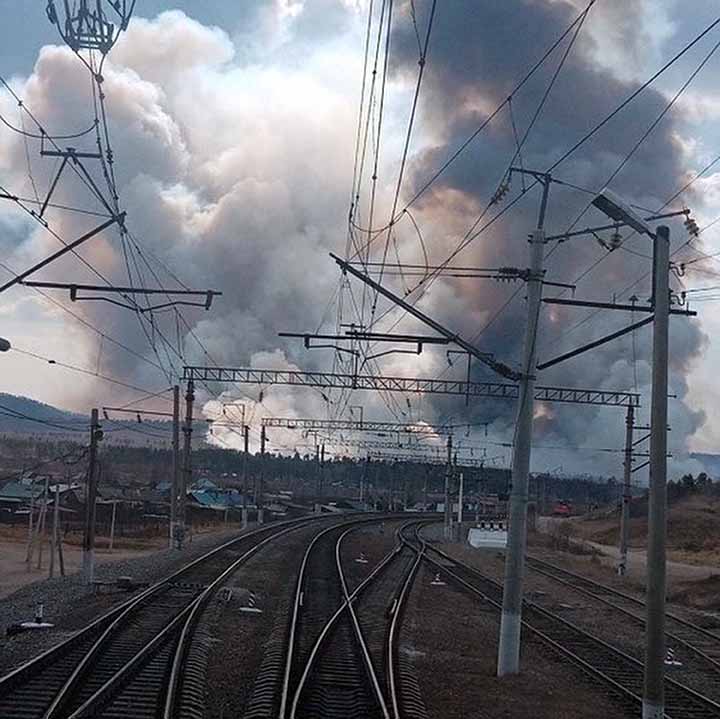
April 2020 wildfires along the Trans-Siberian railway. Pictures: Trans-Baikal Volunteer Forest Firefighters
In Krasnoyarsk region ten times as much territory was ablaze on 27 April compared with last year, Zinichev said. In TransBaikal three times as much land is hit amounting
to 200,000 hectares. In the Amur Region, the number of outbreaks increased by
one and a half times.
‘The main reason, of course, is unauthorised and uncontrolled agricultural fires,’
he told the president. ‘A less snowy winter, an abnormal winter, and insufficient soil moisture are factors that create the conditions for the transition of landscape fires
to settlements.'
Zinichev spoke of abnormally hot weather and strong winds which seriously
complicated the threat.
But he called for tougher punishments for those starting fires which got out of
control, and caused ‘significant damage or even death’.
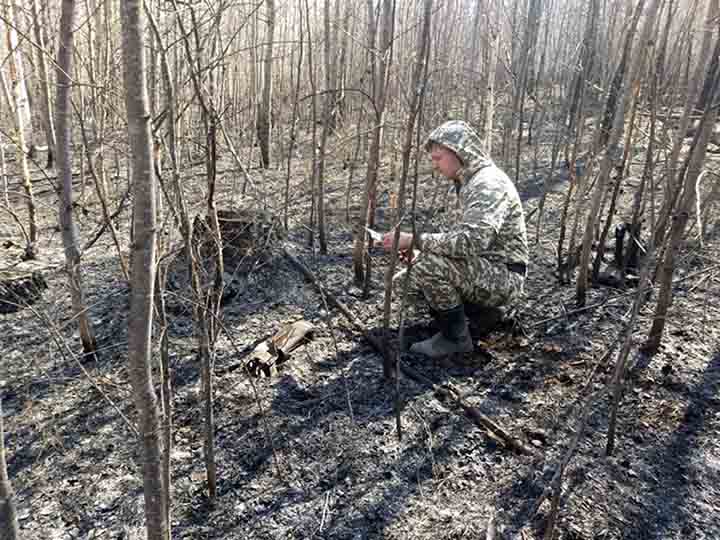
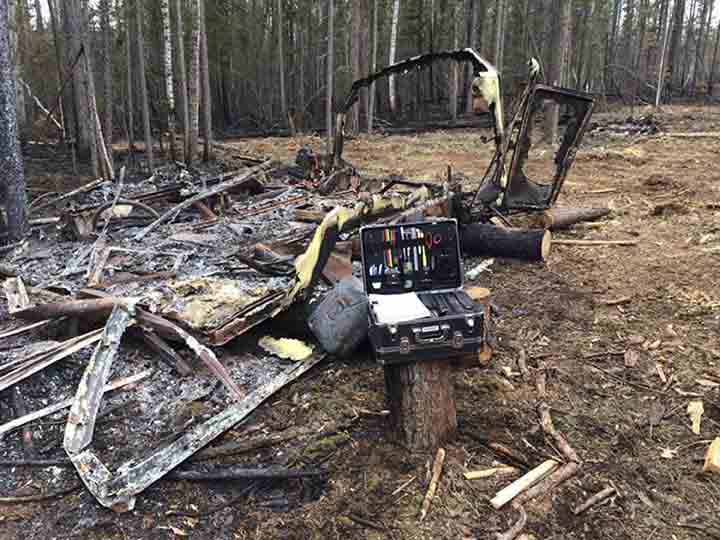
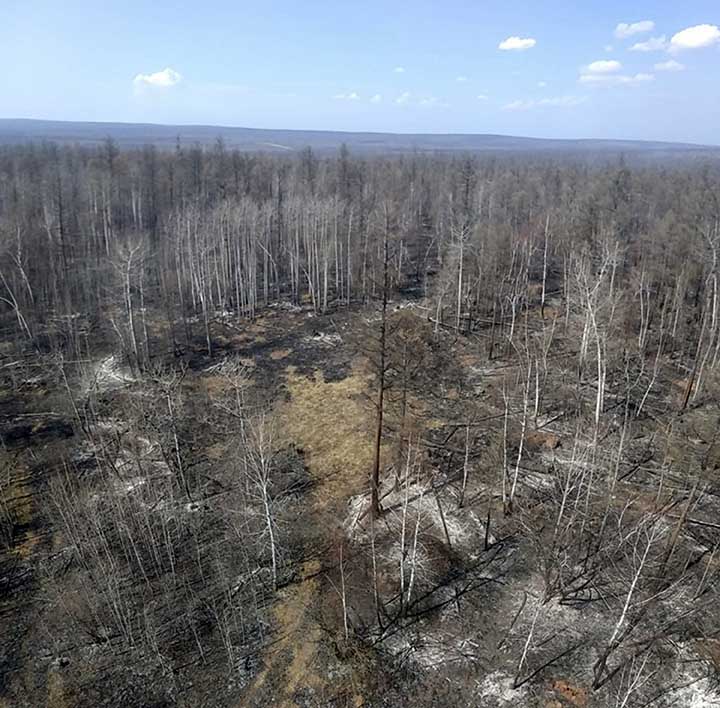
Aftermath of the Irkutsk wildfires. Pictures: EMERCOM Irkutsk region
In April, fires hit Kemerovo, Novosibirsk, Altai, Trans-Baikal, Tomsk, Omsk, and Krasnoyarsk regions as well as Altai Republic.
Some 50 houses were destroyed in Novosibirsk region and 27 in Kemerovo. All
residents were evacuated.
Both Novosibirsk and Chita suffered smoke pollution from the fires.
Sergei Anoprienko, head of the federal forest agency Rosleskhoz, directly blamed
the coronavirus lockdown for the rise in fires.
‘People self-isolated outdoors and forgot about fire safety rules,’ he said.
‘In some regions, the temperature is already around 30C, and people just can’t
keep themselves in their apartments.
‘People rushed outdoors, and as a result we have a surge of thermal points.’
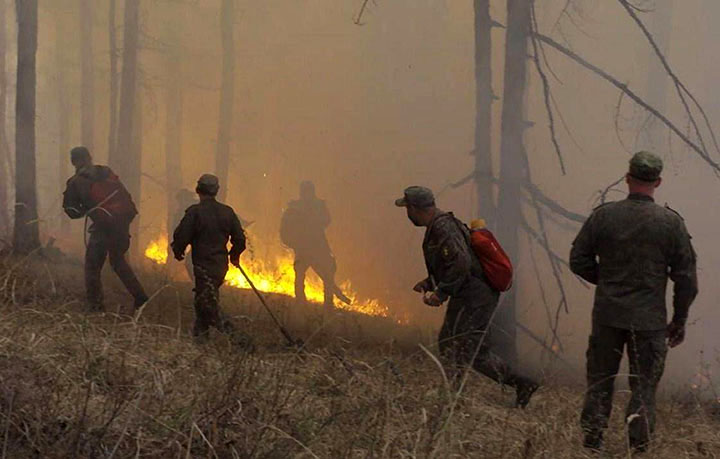
Military firefighters in the Republic of Tuva. Pictures: EMERCOM Tuva
Humans were the main cause of fires, including burning of dry grass by farmers,
even though this has been banned, he said.
‘The most difficult situation is now in Trans-Baikal region and Buryatia,’ said
Anoprienko.
An emergency mode has been in place since mid-April in TransBaikal.
‘Despite all the regulatory prohibitions, and the agricultural fires have been banned since 2015, people are burning dry grass. Today there are 75 forest fires, 73 of which
are federal forest territory.
‘In total, on April 28 of this year, 3,339 outbreaks were recorded, compared with
last year - 1,960. The area covered by fires since the beginning of the year is
477,000 hectares. Last year, on this day was 382,000 hectares.’
He spoke as Russia is going into the annual May holidays spanning the period
1-11 May, and while unprecedented lockdown measures are imposed across the
country, many people are expected to lee their towns and cities for the countryside.
‘An abnormally warm winter, an arid spring, and the human factor have made adjustments to our forecasts,’ he said. ‘In May – June, a dangerous period usually
begins in Siberia. Regions at risk are, as usual, Irkutsk and Krasnoyarsk regions, Khakassia and Tuva republics (and) Omsk, Novosibirsk and Tomsk regions.
'We can keep talking about the forecast for a very long time, but the actual fire
situation will literally depend on us and you - on how we will behave.’
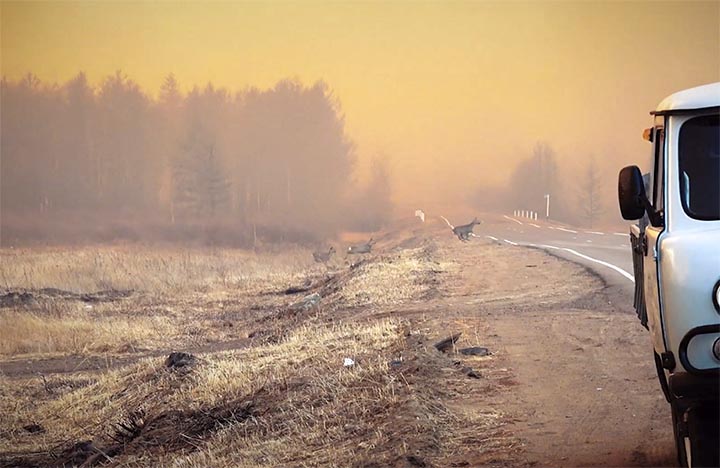
Roe deer pictured escaping wildfire in the Trans-Baikal region near Arakhley lakes. Picture: Pavel Pilot
In some regions winds of up to 80km an hour coupled with temperatures of 25C
are spreading fires.
Resident of village Ivan-Ozero village, Pavel Kobelev, told Chita.ru that the fires
on the border with Buryatia started since on 5 April.
He showed officials the fires on a map and filmed them with a drone, but claimed
they did not react.
As a result to April 16 the fire came close to villages near the Arakhley lakes, and
the smoke covered Chita city.
The fire was extinguished on 18 April 18 four or five days later there were new outbreaks.
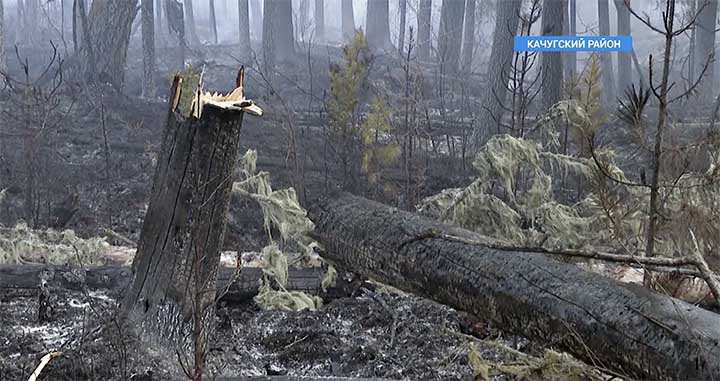
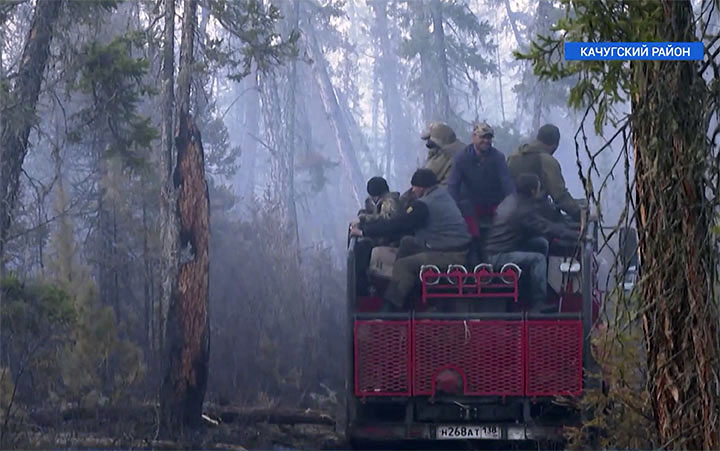
Wildfires in Irkutsk region. Pictures: AIST-TV
Currently around 600 people are fire fighting, with local residents assisting despite
the quarantine restrictions.
Locals in Lesnaya are battling for the second week stop infernos reaching nearby
fuel storages including at a local military facility.
In Irkutsk region, close to Lake Baikal, cases of arson have been established.
Dear the village of Zarechnoye, officials found traces of flammable liquid linked to
forest. Arrests have been made.
A big wildfire in Shelekhov district was caused by an unattended campfire left by
people who rafted down river despite the lockdown.
The arsonists will be fined not only the amount of damage caused, but also the cost of extinguishing the fire, which can count up to several hundred thousand roubles.
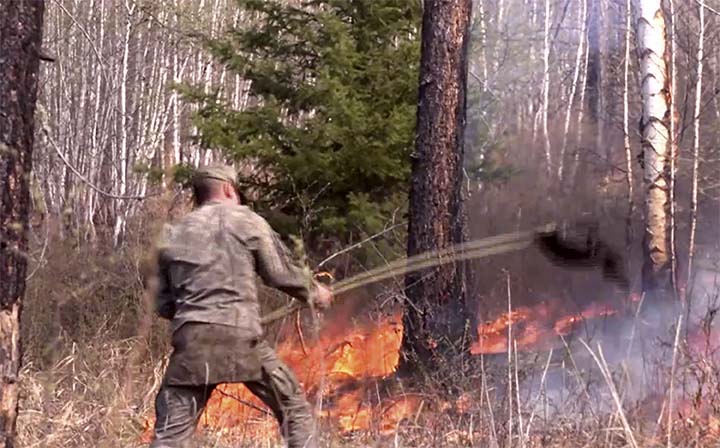
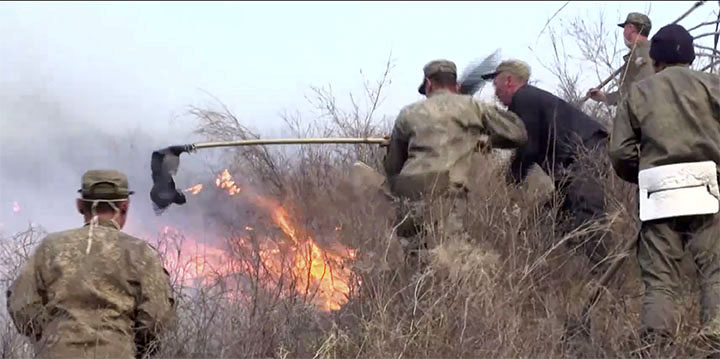

Wildfires in the Republic of Tuva. Pictures: Tuva24
In Irkutsk region, the mayor of Ust-Kut town Alexander Dushin accused four district officials of attempting to start a wildfire after they were caught with gas canisters.
The four officials have gone missing and investigators are seeking to unravel the
murky case.
In Tuva, 100 military troops were drafted in to fight fires at the request of the head
of the republic, Sholban Kara-ool.
They prevented a threat to the village of Boyarovka.
For two days, the Mi-8 AMTSH Terminator helicopter with a spillway device was
used, but because of the strong smoke, it is not safe anymore, so they continue
the fire fight on land.
The battle is complicated by the terrain - hills with dense forest.
WILDFIRES IN NOVOSIBIRSK AND TRANS-BAIKAL REGIONS, CREDIT
EMERCOM








No comments:
Post a Comment
Note: only a member of this blog may post a comment.